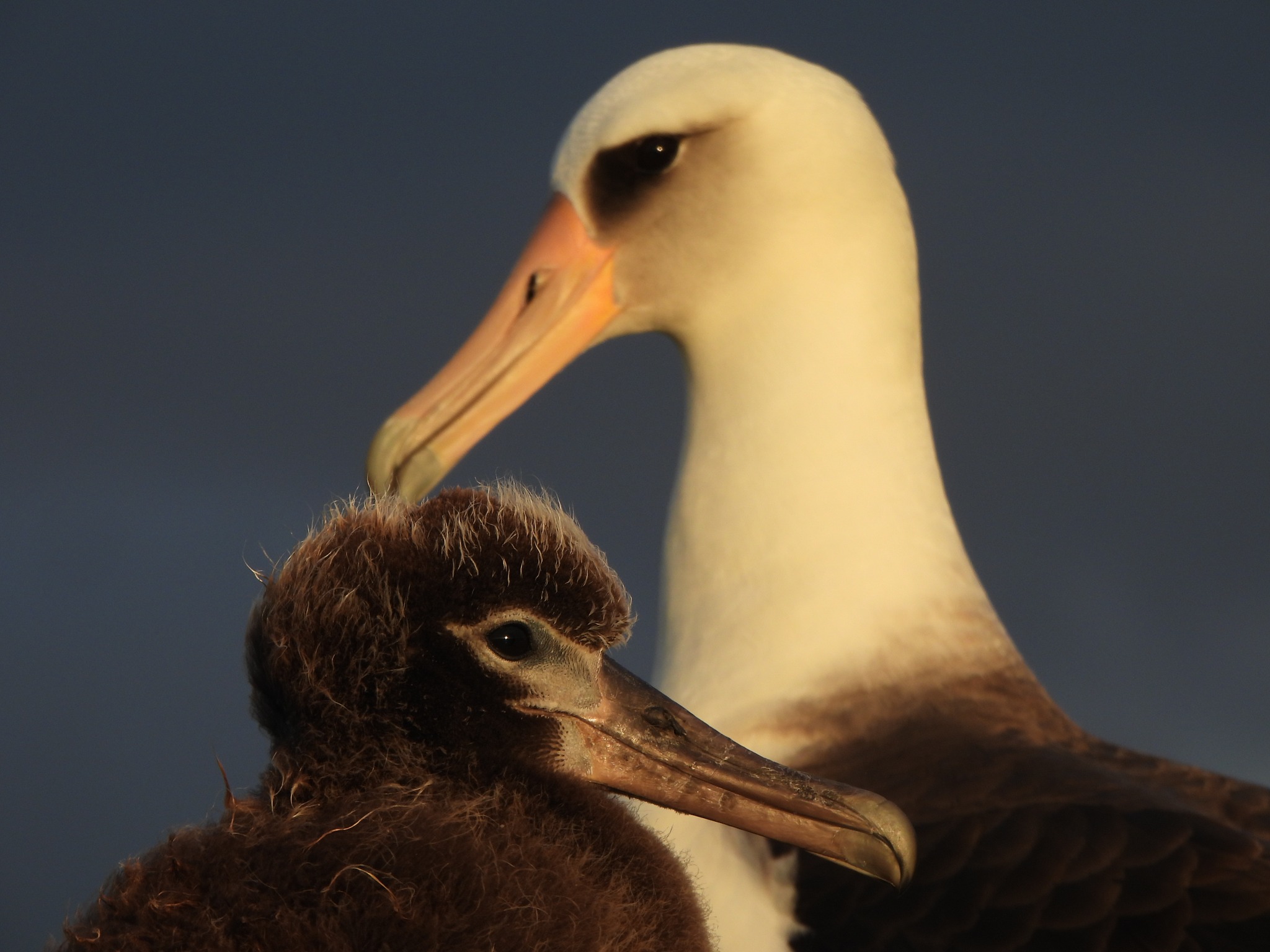Celebrate World Oceans Day with Nick’s first blog of the season!
Aloha! Nick here with my first blog entry. To begin, it’s pertinent to note that I am very much a bird guy, so most of my blogs will be bird centric while also covering other highlights that are notable. Additionally, mahalo to our Hōlanikū and Papahānaumokuākea ohana for continued support and kindnesses as we embark on this year-long journey.
Our team has been here for nearly three full weeks, and we’re finding more of a groove as our typical responsibilities are becoming more routine. Transects to find and eradicate Verbesina are continued as well as Koloa Pōhaka/Laysan Duck monitoring, camp kuleanas, facilities maintenance, wildlife observations, and the associated roles for functioning in a remote seabird colony. We have a strong sense of community between the four of us, with our dinner table often being transformed into a ping pong table, board game station, and locale for laughter and conversation – all necessities for mental equilibrium and happiness.
There’s really no shortage of sources for joy. The cacophony of birdsong is a perfect lullaby whether it be the ghoulish calls of ‘Ua’u kani/Wedge-tailed Shearwaters, the chattering of Mōlī/Laysan Albatross bills, or flyby Nunulu/Bonin Petrel churrs. I’ve yet to hear a Kermadec Petrel nocturnal call, and I’m fairly confident they would wake me up with their noisy “yuk-ker-a-oooo-wuk”. Avian observation opportunities are endless, with every square foot of Hōlanikū being inhabited. Albatross chicks patiently await for the return of their parents with a harvest of oily squid regurgitation from their proventriculus, down-covered ʻĀ/Red-footed Booby chicks are maturing quickly in their Naupaka-based nests, and ‘Ewa’ewa/Sooty Tern parents are vigilantly incubating their eggs as the first laid individuals are hatching. There are also some late travelers still lingering, as ʻAkekeke/Ruddy Turnstones, Kioea/Bristle-thighed Curlews, and Kōlea/Pacific Golden-Plovers continue to prepare for a drastic change in climate as they head to the Arctic. It’s easy to look at the vast quantity of seabirds that live here and view them as a population, but it’s heartening to observe each nest and qualify their unique behaviors, personalities, and interactions as not just part of a whole but rather a family. Mahalo again for reading.
Notable birds from the M/V Imua: South Polar Skua (1), Long-tailed Jaeger (1), Buller’s Shearwater (1), Cocos Booby (7), ‘Ua’u/Hawaiian Petrel (21), ‘A’o/Newell’s Shearwater (5).
Notable Hōlanikū wildlife: Cocos Booby (3), White-tailed Tropicbird (1), High Count of Brown Booby (115) Masked Booby (80) Sooty Tern (5700) Gray-backed Tern (200) Christmas Shearwater (11).
Camp Highlights: Kayla made really great chili. Jordan is ping pong champion. Dwight and I are undefeated board game partners. The pull-up bar is getting lots of usage.
